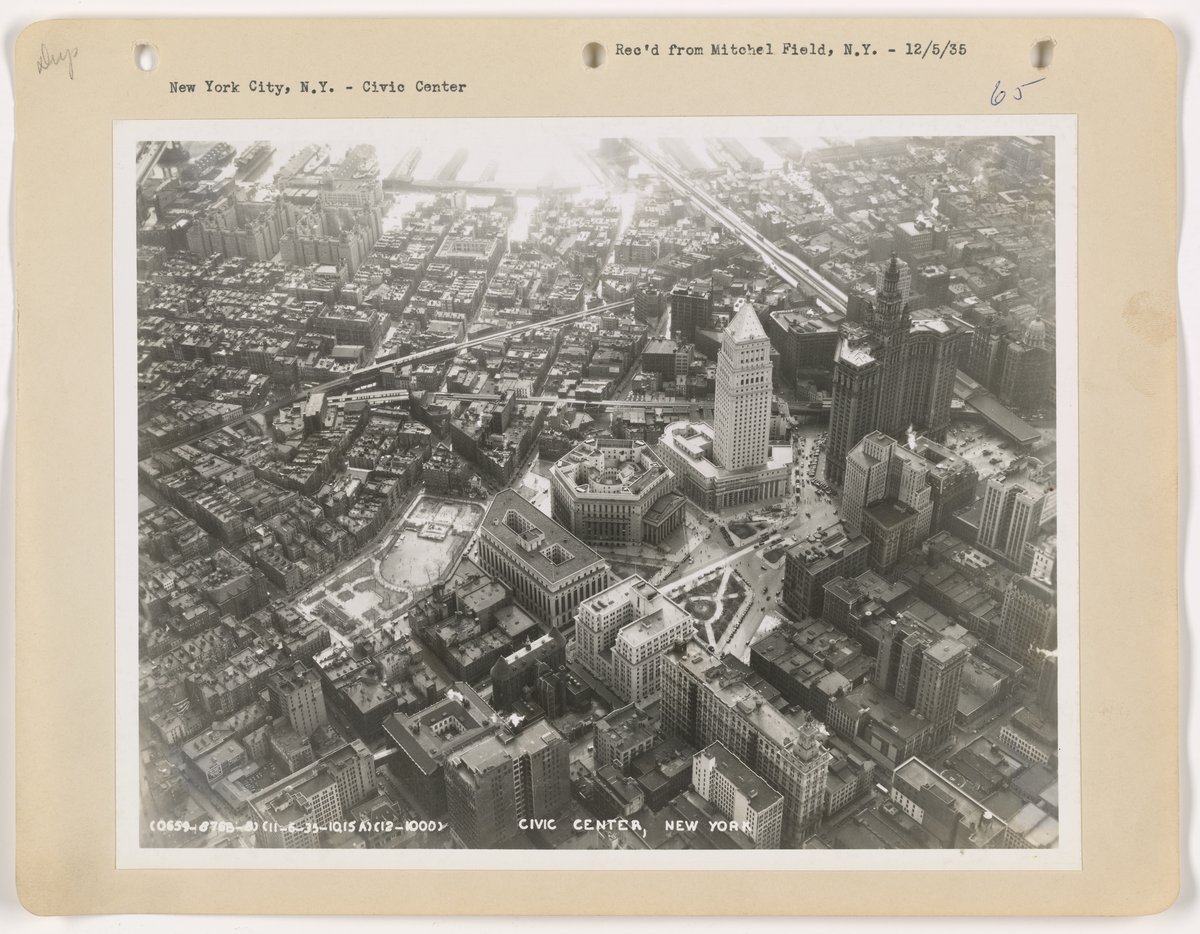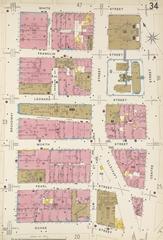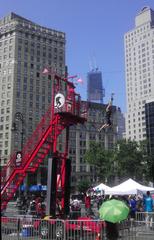
Foley Square Visiting Hours, Tickets, and Historical Sites in New York City
Date: 14/06/2025
Introduction
Foley Square, located in the heart of Lower Manhattan, is a historic and vibrant civic plaza that embodies New York City’s rich cultural, legal, and architectural heritage. Once Lenape land and later the site of Collect Pond, Foley Square has witnessed centuries of urban transformation—from a notorious 19th-century immigrant neighborhood to a monumental civic center. Today, it stands as a focal point for public discourse, legal proceedings, and community gatherings, offering free, 24/7 access to all. Whether you are a history enthusiast, architecture admirer, or simply exploring downtown Manhattan, Foley Square is an essential stop for understanding the city’s layered past and dynamic present (downtownny.com; history.nycourts.gov; wikiwand.com).
Table of Contents
- Introduction
- Historical Overview
- Urban Evolution and Planning Significance
- Legal and Civic Importance
- Social, Political, and Cultural Role
- Architectural and Artistic Features
- Visiting Foley Square: Practical Guide
- Travel Tips and Local Etiquette
- Frequently Asked Questions (FAQ)
- Visual and Media Resources
- Conclusion
- References
Historical Overview
Lenape Land and Collect Pond
Foley Square’s story begins as the land of the Lenape people, who valued the area for its abundant resources and fresh water from the 48-acre Collect Pond. By the early 1800s, industrial pollution led to the pond’s drainage and infill, setting the stage for radical urban transformation (downtownny.com).
Five Points Era
After Collect Pond was filled in, the area became notorious as Five Points, a crowded and impoverished slum. Despite its reputation for crime and poverty, Five Points was a melting pot, where Irish, Italian, Jewish immigrants, and African Americans lived side by side, shaping the city’s multicultural identity (gsa.gov).
Emergence as a Civic Center
The early 20th century saw a push for urban reform and civic order. The neighborhood was cleared and developed into a center for New York’s legal and governmental institutions. Foley Square was named for Thomas F. “Big Tom” Foley, a Tammany Hall leader, and quickly became symbolic of the city’s civic power (wikiwand.com).
Architectural Landmarks
Foley Square is surrounded by impressive structures such as:
- Thurgood Marshall United States Courthouse (1936): An Art Deco icon housing the U.S. Court of Appeals for the Second Circuit (gsa.gov).
- New York County Supreme Court (1927): Known for its grand Corinthian columns.
- Tweed Courthouse, Surrogates Court, and Municipal Building: Exemplifying the area’s architectural diversity and civic importance.
Thomas Paine Park provides open green space amid these monumental buildings (wikiwand.com).
The African Burial Ground
Beneath Foley Square lies part of the African Burial Ground, a 17th- and 18th-century resting place for free and enslaved Africans. Today, commemorative markers and sculptures honor this essential chapter of New York’s history (downtownny.com).
Foley Square in Contemporary Civic Life
Foley Square has long been a site for public gatherings, protests, and historic trials. Notable demonstrations include Occupy Wall Street (2011), the Eric Garner protests (2014), and the annual Queer Liberation March (wikiwand.com).
Urban Evolution and Planning Significance
Foley Square’s configuration as a triangular plaza—bordered by Worth, Centre, and Lafayette Streets—reflects broader trends in American city planning. The transformation of this space during the Progressive Era aimed to centralize government functions and symbolize civic authority. City planner George McAneny integrated rapid transit, zoning, and urban design principles to create a cohesive civic center (hows.tech; history.nycourts.gov).
Legal and Civic Importance
Foley Square is surrounded by several of New York’s most significant legal buildings:
- Thurgood Marshall United States Courthouse (40 Centre St.)
- New York County Supreme Court (60 Centre St.)
- U.S. Courthouse (500 Pearl St.)
- New York City Municipal Building
These institutions underscore Foley Square’s role as the epicenter of legal proceedings and civic life in New York City. The square is both a symbol and a stage for justice, democracy, and the rule of law (history.nycourts.gov).
Social, Political, and Cultural Role
Foley Square’s open layout makes it a natural gathering place for demonstrations, festivals, and community events. Over the years, it has hosted civil rights rallies, labor protests, vigils, and public art installations. Following September 11, 2001, it even served as an emergency coordination center, illustrating its adaptability and civic importance (hows.tech; secretnyc.co).
Architectural and Artistic Features
Foley Square contains several notable features:
- The Triumph of the Human Spirit: A granite sculpture by Lorenzo Pace, dedicated to the African Burial Ground and the resilience of African Americans.
- Bronze Medallions: Five large bronze medallions embedded in the plaza depict the site’s history, from Native American land to its current civic role (CultureNOW).
- Foley Square Fountain and Thomas Paine Park: Offer tranquil spots for relaxation amid the city bustle.
These elements, together with commemorative plaques and memorials, make the square a place of reflection and celebration.
Visiting Foley Square: Practical Guide
Hours and Fees
- Plaza Access: Foley Square is open 24 hours a day, year-round, and is free to the public.
- Courthouse Buildings: Most operate during business hours (typically 9 AM–5 PM); check official sites for details.
Accessibility and Transit
- Wheelchair Access: The square and its pathways are wheelchair accessible.
- Subway: 4, 5, 6, J, and Z trains stop at nearby Brooklyn Bridge–City Hall and Chambers Street stations. The R and W lines also serve the area. The A, C, and E lines stop at Canal Street (The Travel Women).
- Bus: M15, M22, M103, and others.
- Biking: Citi Bike stations are nearby, with bike lanes along Lafayette Street.
Nearby Attractions
- Chinatown and Little Italy: Diverse dining and shopping.
- African Burial Ground National Monument: Adjacent, with visitor center and exhibits.
- Brooklyn Bridge: 524 meters away, ideal for scenic walks.
- City Hall Park and One World Observatory: Both within walking distance.
Guided Tours and Photography
- Walking Tours: Many Lower Manhattan tours include Foley Square (Free Tours by Foot).
- Photography: Best light is in the morning or late afternoon. Respect security protocols and avoid photographing ongoing court proceedings or restricted areas.
Food, Restrooms, and Safety
- Dining: Nearby Chinatown, Tribeca, and Little Italy offer a variety of food options (VisitNYC.com).
- Restrooms: Available in nearby parks (e.g., Columbus Park) and civic buildings (when open).
- Safety: The area is well-patrolled, especially during business hours. As in any city, stay alert and keep valuables secure.
Travel Tips and Local Etiquette
- Sidewalk Etiquette: New Yorkers walk quickly; step aside to consult maps or phones (The Travel Women).
- Dress: Comfortable shoes and layers are recommended; black and neutral colors are common.
- Weather: Spring and fall are most pleasant; summer can be hot, winter cold and windy.
- Cash/Card: Most establishments accept cards, but carry some cash for small purchases.
- Public Wi-Fi: Available in some parks and subway stations, but connectivity may vary (Go Far Grow Close).
- Support Local: Patronize local shops and eateries to support the surrounding community.
Frequently Asked Questions (FAQ)
Q: What are Foley Square’s visiting hours?
A: Foley Square is open to the public 24/7.
Q: Is there an admission fee or ticket required?
A: No, the plaza is free to access; no tickets are required.
Q: Is Foley Square wheelchair accessible?
A: Yes, the square and most pathways are accessible.
Q: Are there guided tours available?
A: Many walking tours include Foley Square; check with local operators.
Q: How do I get there by subway?
A: Take the 4, 5, 6, J, Z, R, or W lines to Brooklyn Bridge–City Hall, Chambers Street, or Canal Street.
Q: Where can I find restrooms?
A: Restrooms are limited; use those in nearby parks, museums, or restaurants when available.
Q: Is Foley Square safe for tourists?
A: Yes, it is generally safe, especially during the day.
Visual and Media Resources
-
Images:
- Bronze medallions in Foley Square (alt: “Bronze medallions embedded in Foley Square pavement”)
- Thomas Paine Park greenery (alt: “Green space and benches in Thomas Paine Park at Foley Square”)
- Historic courthouse facades (alt: “Thurgood Marshall United States Courthouse facade”)
- Map highlighting Foley Square’s downtown location
-
Virtual Tours:
- Explore interactive maps and 3D tours via NYC Parks.
Conclusion
Foley Square stands as a living testament to New York City’s evolution—shaped by indigenous history, waves of immigration, legal milestones, and civic activism. Its open, accessible plaza, surrounded by landmark courthouses and public art, invites visitors to engage with both the city’s storied past and vibrant present. With no admission fee and excellent transit connections, Foley Square is a versatile and enriching destination for all.
For a deeper experience, consider a guided tour or explore virtual resources before your visit. Download the Audiala app for curated tours and real-time event updates, and follow us on social media for the latest travel tips and New York City guides.
References and Useful Links
- Foley Square: A Historic and Vibrant Civic Center in New York City - Visiting Hours, Tours & Tips (downtownny.com)
- Foley Square Visiting Guide: History, Legal Landmarks, and Tourist Tips in New York City (history.nycourts.gov)
- Foley Square Visiting Hours, Tickets, and Guide to New York’s Historic Civic Plaza (nycgovparks.org)
- Practical Tips for Tourists Visiting Foley Square: Hours, Tickets, and What to Know (The Travel Women)
- Foley Square Visiting Guide (hows.tech)
- Foley Square History and Cultural Significance (wikiwand.com)
- Best Things to Do in June in New York City (secretnyc.co)
- History of Foley Square (CultureNOW)
- NYC Parks (nycgovparks.org)
- Free Tours by Foot (freetoursbyfoot.com)
- VisitNYC.com (visitnyc.com)
- Go Far Grow Close (gofargrowclose.com)
























































































































































































































































































